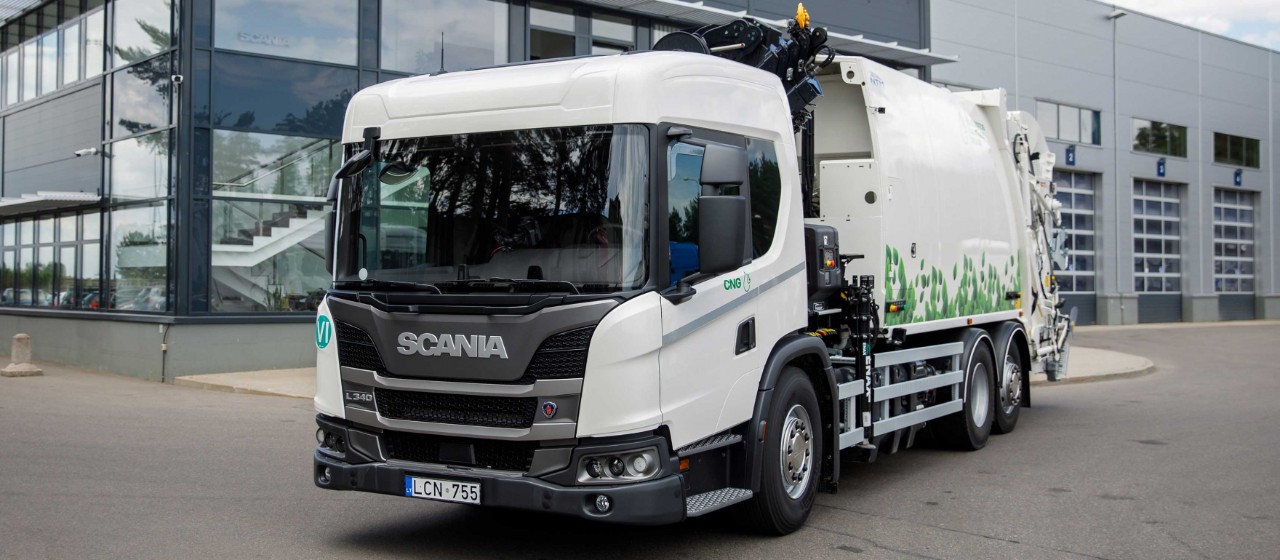
A Scania gas refuse truck operates in the narrow streets of Vilnius
8 OCTOBER 2019
Ekonovus, the waste management company entrusted with operating in Vilnius, has invested in a compressed gas Scania L 340 refuse truck. With its low-entry cab and outstanding driver visibility, the truck has been specifically designed for tight and congested cities.
Featuring a rich diversity of buildings, the Lithuanian capital of Vilnius has been placed on the UNESCO World Heritage list. From its medieval foundation, Vilnius has influenced Eastern European architecture and culture over several centuries. The Vilnius historic centre has been largely preserved, delighting residents and tourists alike. But its narrow streets make refuse collection challenging.
Alternatively fuelled trucks for sensitive areas
“The first compressed gas trucks will serve the densely populated and most environmentally sensitive areas, such as Vilnius Old Town. In the future, we will use alternatively fuelled trucks in all such areas,” says Andrius Murnikovas, Director, Ekonovus Logistics and Technical Department.
An ambition to provide efficient waste management services, as well as to minimise emissions, prompted Ekonovus to invest in the new Scania model. “We will see far more of these trucks as the fuelling infrastructure now rapidly expands. Here in Lithuania, we’re pioneers in adopting next-generation refuse trucks inspired by similar trucks in neighbouring countries.”
“We will later invest in more trucks for more cities”
Ekonovus plans to invest in more Scania low-entry trucks for deployment across the country. “The first gas refuse trucks will serve Vilnius and Klaipeda residents,” says Ekonovus’ CEO Romas Draskinis. “We will later invest in more trucks for more cities.”
The Scania L 340 has a body with a crane and compactor for emptying Molok waste containers, which partially lie underground. During the emptying process, the lid is removed, and a lifting bag is pulled from the well. After positioning the bag over the compactor, the bottom of the bag opens, and the content is released.